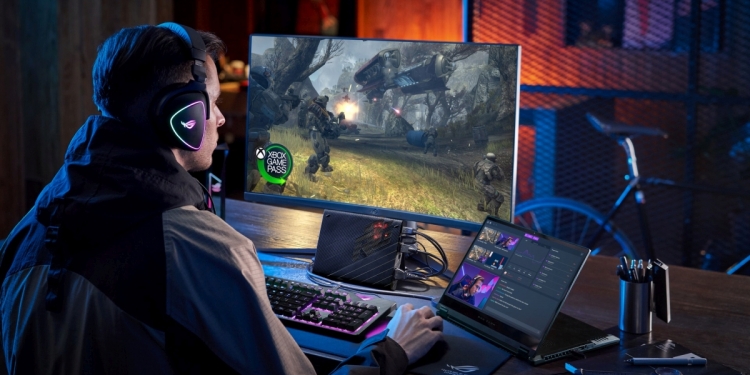For a large majority of their existence, gaming laptops have always just been the “wow that’s cool, but I probably won’t want to use one as my daily driver” kind of devices to me. So many of them are big, heavy and come with “gaming” features that generally mean it’s less than ideal for actual productivity work. The ROG Flow X13, wants to change that in a big way.
This is a brand new gaming laptop from Asus and at first glance, I was surprised at they’re calling it a gaming laptop. For starters, it’s a 2-in-1 convertible laptop. That means you can flip the screen all the way around and use it like a tablet.
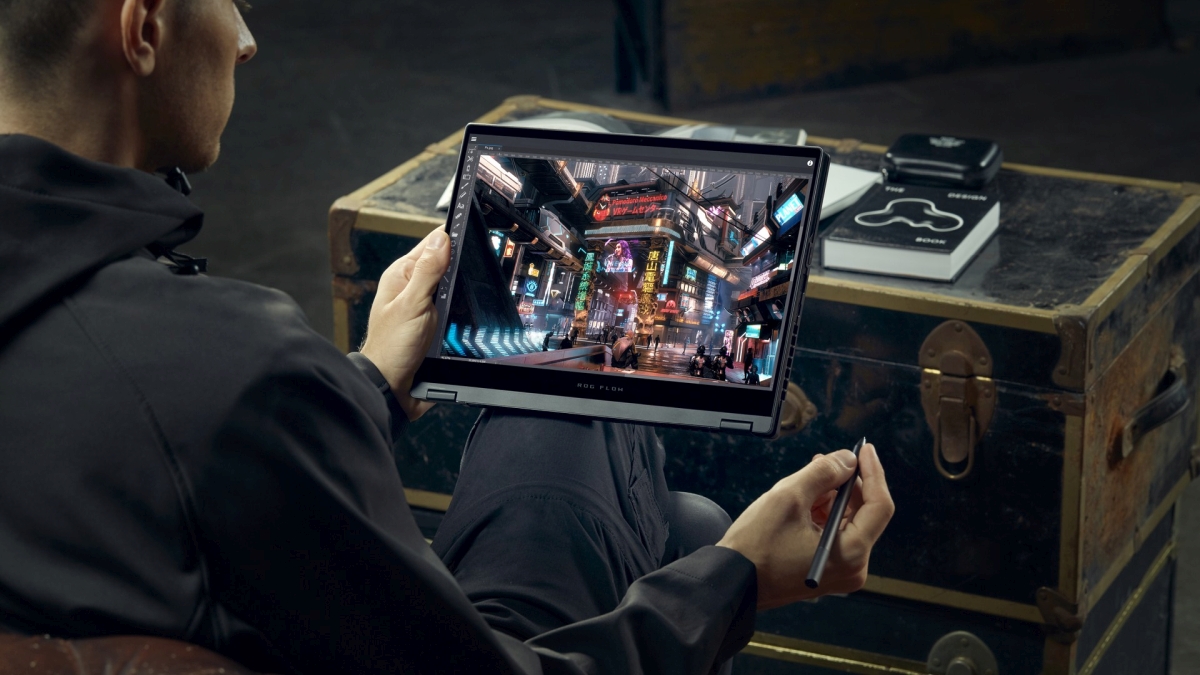
Then, there’s the display panel itself. On the Flow X13, you’re getting a 16:10 aspect ratio that Asus says has been Pantone Validated for “superb colour accuracy”. Sure, that sounds great, but the interesting thing here is the aspect ratio. Typically, a 16:9 aspect ratio is nicer for content consumption purposes like video watching or gaming because then you get the full experience. But for more productivity-oriented laptops, a 16:10 screen gives more vertical real estate which is better for browsing and split-screen multitasking.
The display is also protected by Corning’s Gorilla Glass, and it supports touch and stylus input.

On top of that, the laptop is designed to be portable. And when I say portable, I mean actually portable, not gaming laptop “portable”. This device weighs in at about 1.3kg, which is very common for ultra-portable workstations, and is a weight that I wouldn’t mind carrying around. Especially since Asus says they’re bundling it with a “lightweight 100-watt USB-C PD charger” that doesn’t look all that different from my Expertbook’s brick.
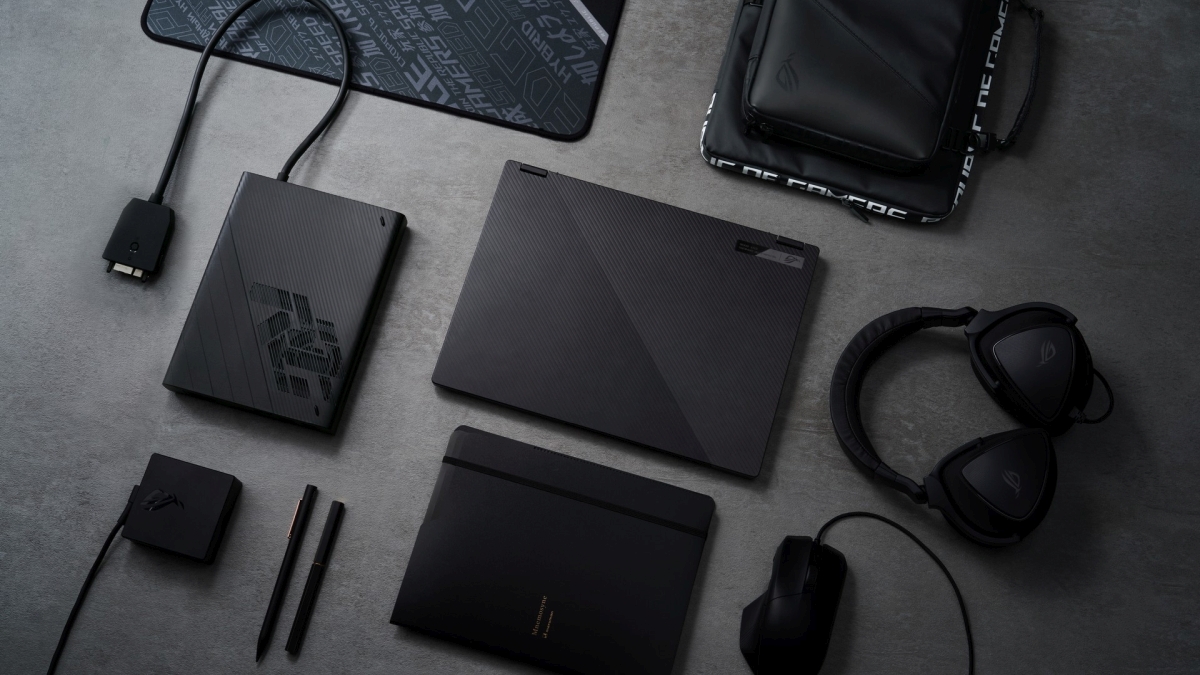
At a glance, it almost looks like Asus took a regular productivity laptop and slapped a bunch of gaming stickers on it and called it a day. Only they didn’t. In fact, it looks like they put a lot of thought into utilising the lessons from tablets and their absolutely mad ROG Mothership to make one of the most interesting gaming devices.
A real Dr Productivity and Mr Gaming situation
For starters, that screen may come in high resolution 4K, but there’s also a 120Hz Full HD panel that you can opt for if you want that extra buttery smoothness. And in this 13-inch form factor, Full HD should be crisp enough for most.
Usually, gaming laptops have to be large with sizable clearance at the bottom so that the fans have enough room to breathe. Enough room to pull in fresh air to cool the high-end internals that live inside. This also means that those laptops end up very thick because that’s a quick way to improve airflow. Asus has experimented with a bunch of different techniques to overcome this, including a special cooling mechanism that lifts the laptop off its bottom panel when the lid is opened.
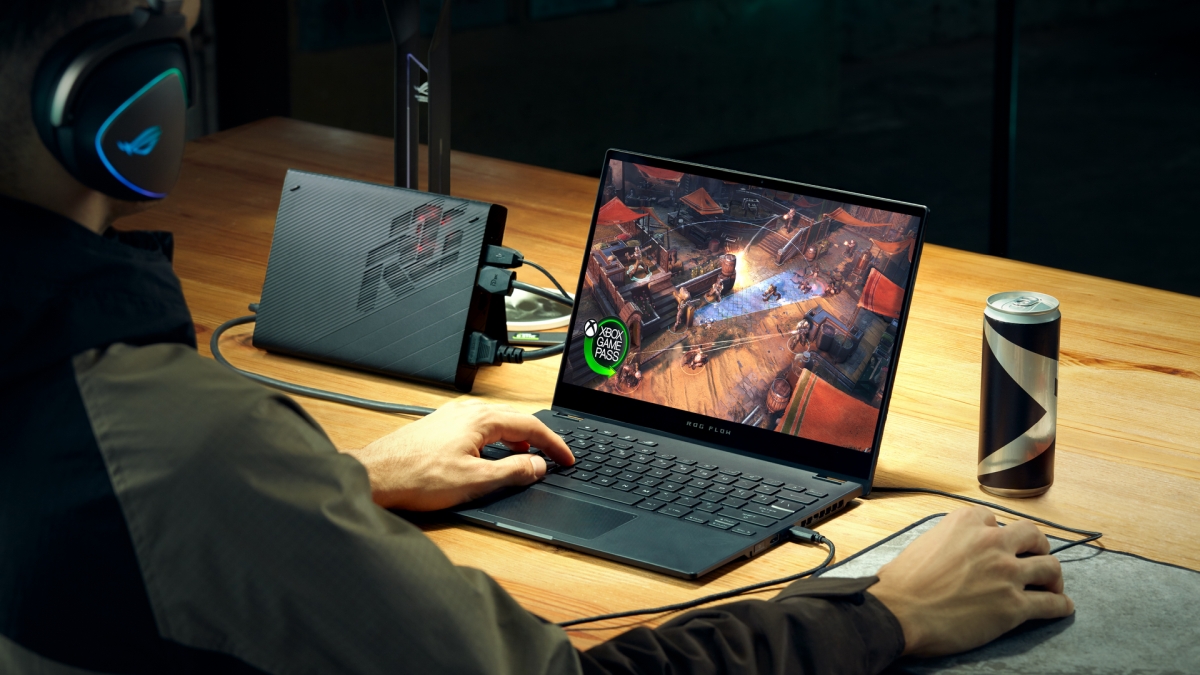
With the ROG Flow X13, they’re going for a more conventional approach. Remember that 2-in-1 form-factor? Yeah, well that’s not just for productivity, it also helps improve cooling. When you flip the device into tent or stand mode, you immediately open the bottom of the laptop up to way more fresh air than it otherwise would get with the bottom pressed up against a table.
This directly improves the amount of fresh air the system can pull in, which should also improve the cooling of the device. Looking at this design, it makes so much sense. Almost to a point where I’m here wondering why I don’t see this on more gaming laptops. After all, when you want to settle into a long gaming session, you’re probably going to hook up a bunch of peripherals like a mechanical keyboard and mouse, so you won’t be using the built-in keyboard and trackpad anyway.
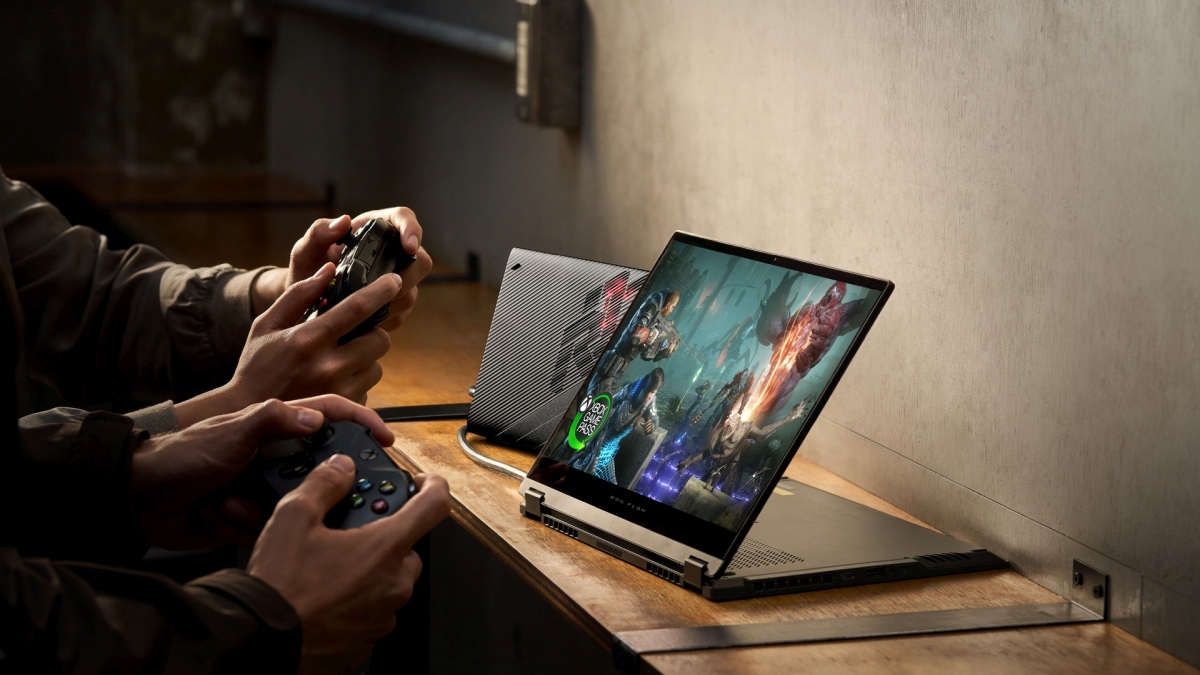
Of course, no gaming laptop would be complete without the internals to run those games. On the Flow X13, you’re getting an AMD Ryzen 9 5980HS processor with an Nvidia GeForce GTX 1650 graphics card. If that GPU configuration has killed your hype a little, don’t worry because this is where the ROG Flow X13’s pièce de résistance comes into play: the XG Mobile.
What this is is an evolution of the eGPU idea. Conceptually, the eGPU was always a great idea because it gave laptop makers the opportunity to focus more on portability and a good CPU when building their devices. Then, when users needed more GPU performance, all they needed was to plug in an external GPU enclosure via Thunderbolt 3 to immediately get access to desktop-grade graphical processing.
However, in practice, there were always a couple of limitations. This includes the limited 40Gbps bandwidth of the Thunderbolt 3 port causing you to lose about 20%-25% of performance from high-end GPUs, as well as the sheer size of these eGPU enclosures. With the XG Mobile, Asus wants to kill both those birds with one stone.
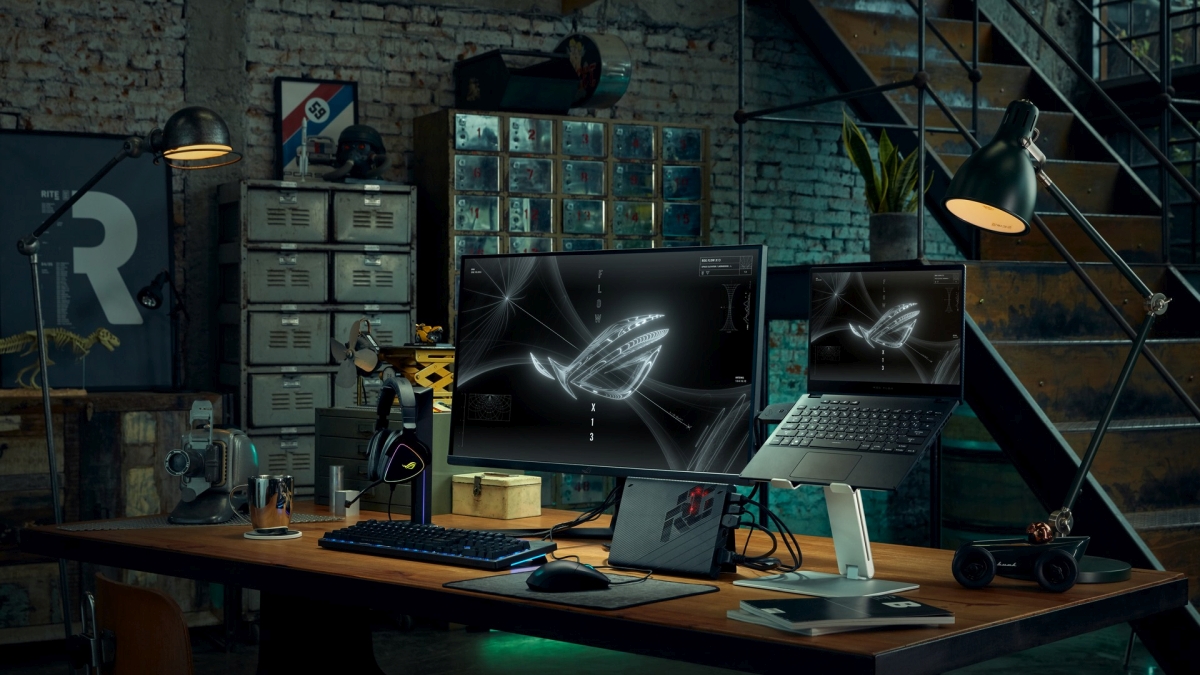
For starters, the XG Mobile is much smaller than your typical eGPU enclosure. It’s kind of like two 20,000mAh powerbanks stacked side by side, and is about as thick too. But, this eGPU features a proper Nvidia GeForce RTX 3080 graphics card. Then, the XG Mobile connects to the Flow X13 through a special port that Asus says will dedicate 63Gbps of bandwith for graphics.
The XG Mobile will also come with a whole host of I/O ports that’ll let you hook up peripherals and even a display. What’s more, the data from these peripherals will be sent through a dedicated USB 3.2 Gen 2 link that’s built into the XG Mobile’s cable. This will also allow you to power the Flow X13 with the XG Mobile itself.
On paper, this sounds like an exciting solution and an interesting direction that Asus has taken with their gaming laptops. Using existing knowledge and technology, with a little sprinkling of innovation, to take gaming and productivity to the next level is very cool indeed.
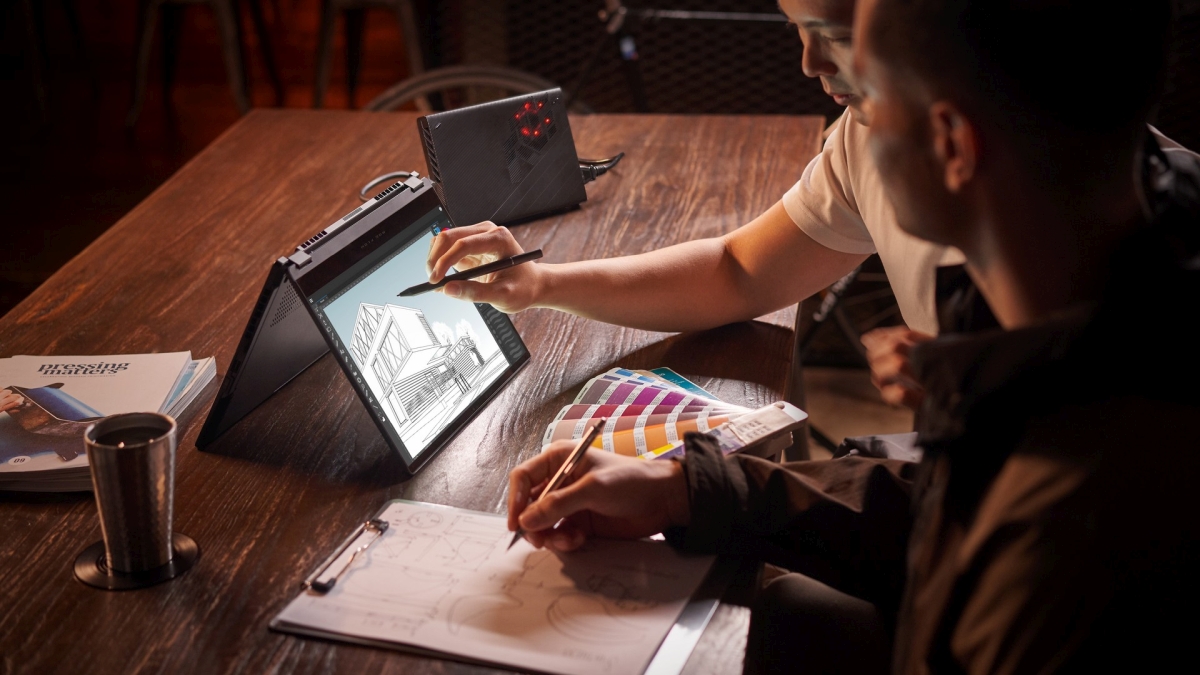
From what I can tell right now, there are only two big downsides to this current first-gen product. First of all, the port that connects the XG Mobile to the Flow X13 is a proprietary one. This means you’ll have to rely entirely on Asus to support it, and you won’t be able to plug your XG Mobile into other devices as well. Next, there’s the price. We don’t know how much this setup will cost if it reaches Malaysia, but considering the specs and nature of this tech, you can expect it to cost a whole lot. Like maybe two mainstream gaming laptops worth of money.
But, the reason I’m excited for this device is more about the idea and the potential technology like this could have if it is given time to develop. Asus Malaysia says that more details for the Flow X13, including configuration and price, for our local market will be announced sometime in February 2021, so stay tuned for those details. In the meantime, let me know your thoughts on the ROG Flow X13 in the comments below.

